When it comes to Kitchen Cabinets, there are two main types: frameless and framed. They are an important part of any kitchen, as they provide the foundation for storage and organization. While both types offer plenty of benefits, there are important differences that should be taken into consideration when deciding which is best for your space. This article will compare and contrast frameless vs. framed Kitchen Cabinets, and help you decide which is the best choice for your home!
What are Kitchen Cabinets?
Kitchen cabinets are an essential component of any kitchen design. They provide storage for food and dishes, help define the style and look of the kitchen, and offer countertop space for meal prep and cooking. Kitchen cabinets come in a variety of shapes, sizes, materials, colors, and finishes to fit any budget or personal preference. Whether you’re creating a contemporary or traditional look in your home, there are many options available to find the perfect cabinets that will match your desired style.
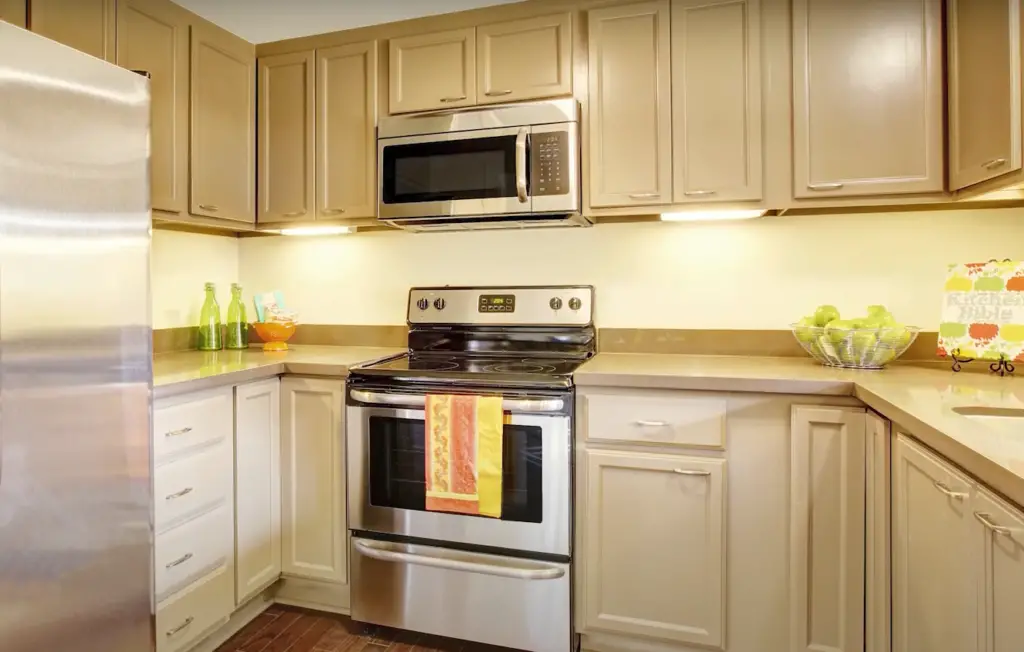
Finally, Custom Cabinetry is custom-made to fit your exact specifications, allowing you to create any design or style you desire. No matter what type of kitchen cabinetry you choose for your home, it’s important to consider all aspects before making a purchase – including budget, style preferences, and overall design [1].
Advantages and Disadvantages of Frameless Cabinets
Frameless cabinets offer a sleek, modern look to any kitchen but there are also several potential drawbacks.
Advantages:
- They are sleeker and more streamlined than framed cabinets, which can make small kitchens appear larger;
- Frameless cabinets often have more interior storage space than framed cabinets due to their lack of framework so you get the most out of your cabinet space;
- They are easy to clean since dirt and dust do not accumulate in hard-to-reach places as it does with framed cabinets;
- The design is simple, making it easier to customize with different drawer pulls and knobs without disrupting the overall aesthetic;
Disadvantages:
- Due to their lack of frame construction, they can be more susceptible to water and moisture damage if not properly sealed or treated;
- Cutting the cabinet pieces correctly is essential to ensure a proper fit, so it may require extra care during the installation process to avoid any gaps or misalignments;
- Some cabinets may lack sufficient support for heavier dishes, so you may need additional shelving supports installed for them to hold up over time;
- Since there is no frame, there is less stability and structure than framed cabinets, which can make them feel less secure;
Overall, frameless cabinets offer an attractive design that can give a modern update to any kitchen but their potential drawbacks should also be taken into consideration before making a final decision. With careful planning and installation, they can be a great addition to any home [2].
Advantages and Disadvantages of Framed Cabinets
The advantages of framed cabinets include increased stability and strength, more design options, and greater access to the cabinet interior. Framed cabinets are sturdier than frameless models, so they can better withstand heavy loads. Building with frames also allows for an extra layer of insulation, potentially making your kitchen more energy-efficient. In addition, the frames offer a larger area in which to add custom trim and molding details that will tie into other elements in the space.
Finally, when it comes to storage potential, framed cabinets typically come with much better access to the interiors because of their door and drawer construction. However, there are some drawbacks associated with this style of cabinetry as well.
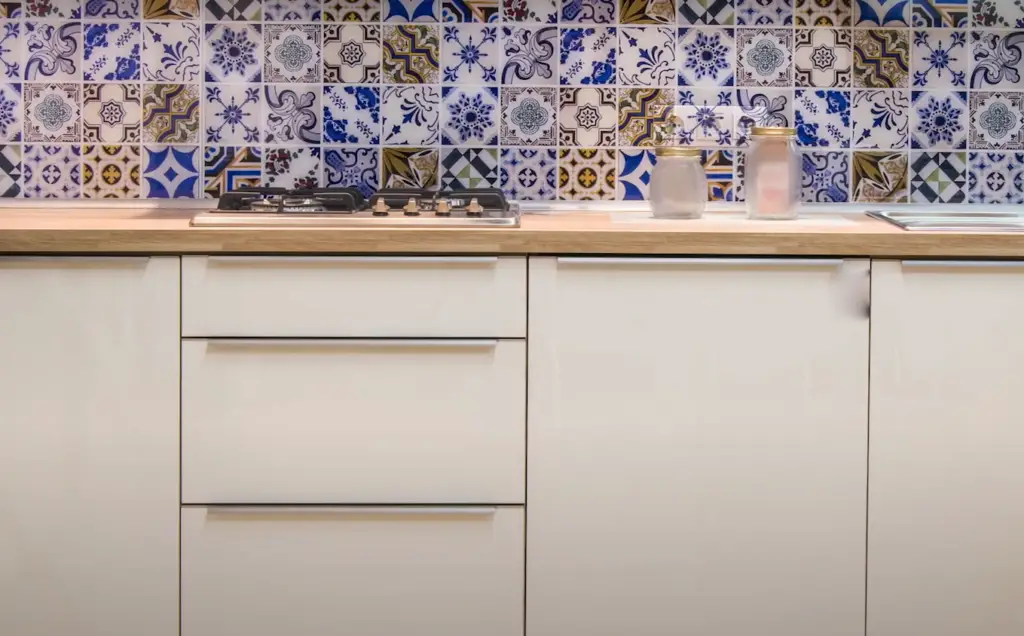
Framed cabinets tend to cost more than frameless models and can be bulkier and harder to install, limiting the types of spaces in which they are feasible. Additionally, if dust or dirt accumulates in the frames, it can be more challenging to remove as compared to a frameless model.
Overall, framed cabinets offer many benefits for your kitchen remodeling project; however, it’s important to consider all aspects before making a decision. If you have space constraints or a tight budget, frameless cabinets may be more suitable [3].
Comparing Framed and Frameless Cabinets
Style
Framed cabinets offer a more traditional look and feel, as the face frame is visible. This can be a great option for those who want to create a classic kitchen design aesthetic. Frameless cabinets typically have a more modern and minimalistic look, as the lack of face frames makes them appear sleeker and cleaner. If you’re looking for an updated look, frameless cabinets may be the ideal choice for your space.
Accessibility
When it comes to accessibility, framed cabinets tend to provide easier access than frameless options. With framed cabinets, each door has its opening in the frame, making it easy to open one at a time without disturbing other doors or drawers. On the other hand, with frameless cabinets, each door is attached to the cabinet box, so opening one can cause other doors and drawers to move. This can make accessing items within frameless cabinets more difficult.
Doors and Drawers
Framed cabinets often feature two different types of doors and drawers: full overlay and half overlay. With a full overlay, the door or drawer covers the cabinet frame completely, giving you a seamless look. The half overlay provides slightly less coverage, leaving part of the frame visible. Frameless cabinets are usually constructed with full-overlay doors and drawers to create a streamlined look [4].
Installation
Installing framed cabinets is typically easier than installing frameless ones due to the extra support provided by the face frames. This can make them an ideal option for DIY projects or those who want to save on installation costs. On the other hand, frameless cabinets require more precision during installation as they don’t have any additional reinforcement from frames.
Storage
When it comes to storage, framed cabinets tend to have more space for items than frameless options. This is because the face frames provide extra support and make it possible to create deeper cabinets. With frameless cabinets, since there is no frame, creating larger cabinets can be a challenge as they may not have enough structural support without a frame.
Hardware
When it comes to hardware, framed cabinets can accommodate larger handles and knobs due to the additional space created by the face frames. Frameless cabinets usually require smaller hardware as there isn’t much room for larger pieces. For frameless cabinets, sleek and minimalistic hardware is often the best choice. If you prefer framed cabinets, you can go with larger and more decorative hardware for an eye-catching look.
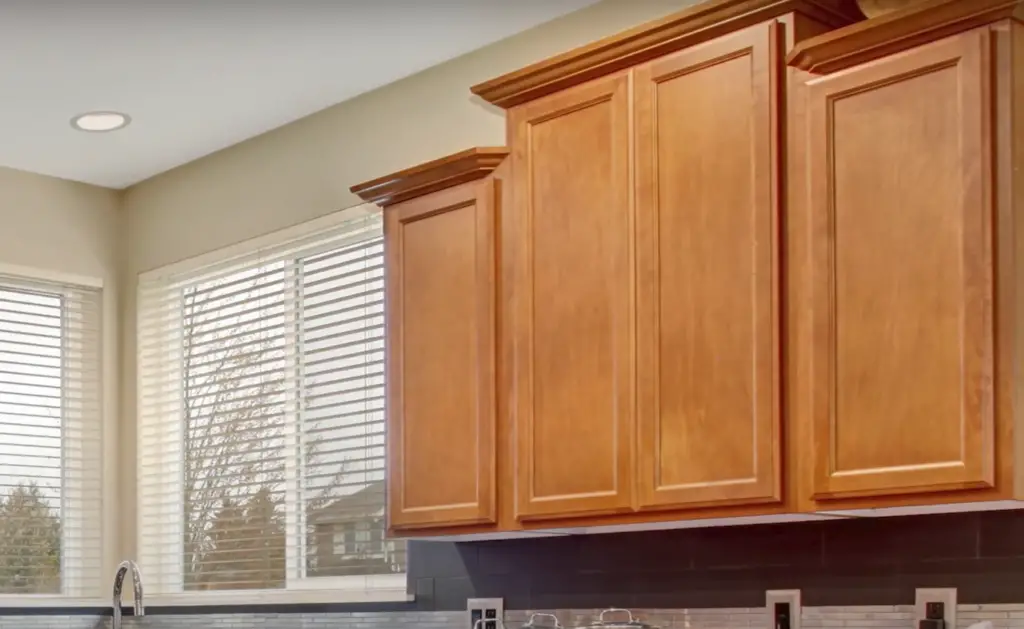
Appliance Installation
Frameless cabinets allow for easier installation of larger appliances such as refrigerators, ovens, and dishwashers. This is because the lack of frames provides more space for a larger appliance to fit into. Framed cabinets may require modifications to make room for large appliances. The best appliance for frameless cabinets is usually an under-counter refrigerator. As for framed cabinets, a standard refrigerator that fits into the available space is usually the best choice. Additionally, framed cabinets may require additional reinforcements to support the weight of a large appliance.
Price
How to install Framed and Frameless Cabinets?
Installing framed or frameless cabinets is a fairly straightforward process, but there are some important considerations to keep in mind. The first step is determining the size and type of cabinets you will be installing. Framed cabinets typically require more preparation than their frameless counterparts, including measuring and cutting out the needed space for them before installation.
Once you have determined the size and type of cabinet that you need, it’s time to start gathering your supplies. You will need screws, hinges, mounting plates, drawer slides, knobs or pulls, countersink drills, and a level. Depending on the style of cabinet you are installing you may also need construction adhesive or shims to secure the cabinets to the wall.
Next, you need to install the mounting plate(s) on the wall. This will serve as a secure anchor for your cabinets, so they must be carefully mounted and level. You may also want to use construction adhesive or shims to ensure they are firmly attached.
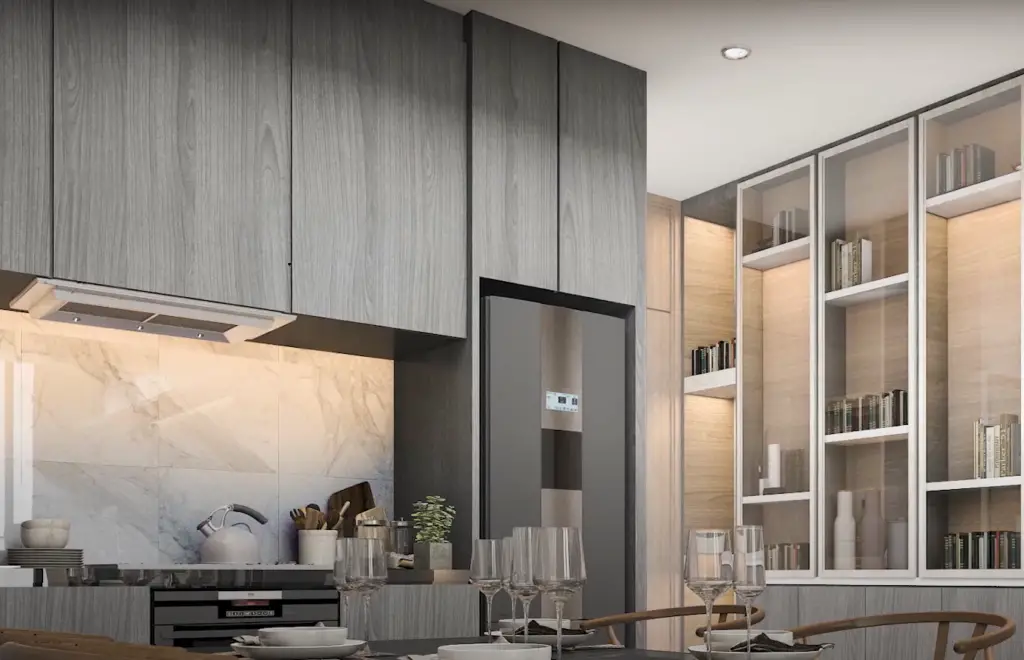
Finally, you’ll need to check the entire installation and make sure everything is level and secure. Once that is done, your cabinets are officially installed and ready to be used! Installing framed or frameless cabinets can be a bit of a challenge, but with careful planning and the right supplies, it’s a relatively easy process [5].
How to use and maintain kitchen cabinets properly?
There are some tips on how to use and maintain kitchen cabinets properly:
- Clean your cabinets regularly: Keeping your kitchen cabinets clean and free from dust and grime can help keep them looking new for longer. Use mild soap and warm water to wipe down the inside and outside of the cabinets at least once a month. This will help prevent dirt buildup and make it easier to remove any grease splatters or spills;
- Don’t put too much weight on shelves: Kitchen cabinets are not designed to hold heavy items like appliances, cookware, or large dishes. If you need extra storage space for these items, consider adding additional shelving that is sturdier than what comes with most standard cabinetry sets;
- Avoid using harsh chemicals on cabinets: Avoid using harsh chemicals when cleaning the inside and outside of your cabinets. These products can damage the finish and lead to fading or discoloration over time. Instead, opt for mild soaps, warm water, and a soft cloth to get rid of dirt buildup;
- Check hinges and handles: Inspect cabinet doors regularly to make sure that all hinges, knobs, and handles are in good condition. If any part is broken or rusty, it’s best to replace it right away as this could cause bigger problems down the line;
- Store items properly: Taking the time to store items correctly can help keep kitchen cabinets organized and looking neat. Assign a specific shelf or space for each item in your kitchen and make sure that everything is properly labeled so you can find it quickly when needed;
- Consult a professional for major repairs: If your kitchen cabinets need major repairs, it’s best to consult a professional for help. This could be anything from replacing hinges, knobs, or handles to refinishing the cabinet doors or replacing parts altogether. A trained expert will be able to do this safely and efficiently without causing any further damage;
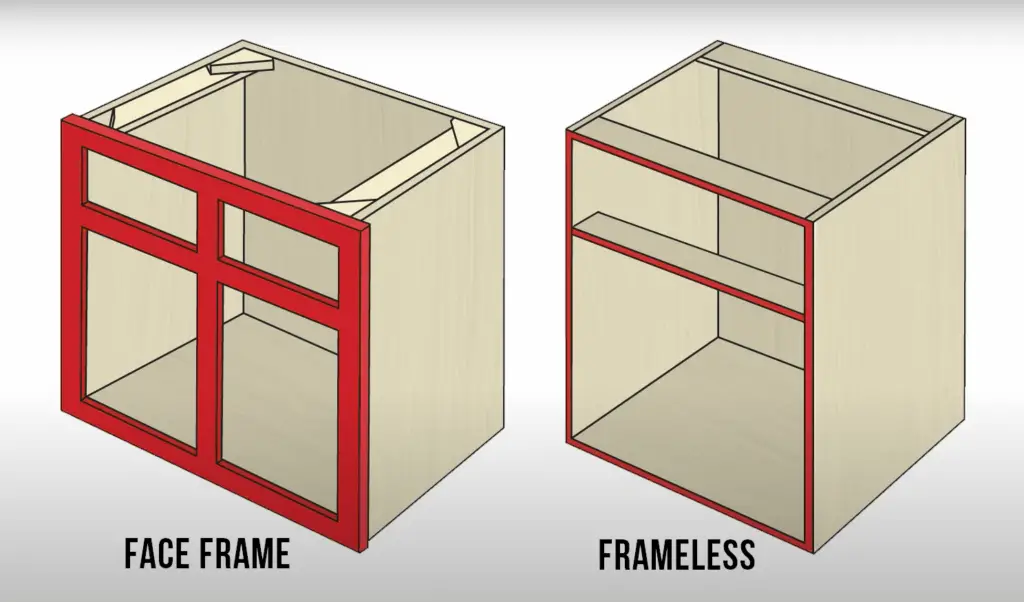
By following these tips, you can ensure your kitchen cabinets remain in good condition for years to come! Plus, if you ever decide to remodel your kitchen down the line, having clean and well-maintained cabinets will add value to your home [6].
FAQ
Are framed cabinets better?
Framed cabinets offer a traditional look and are generally considered more durable than frameless models, as the door rests on a frame that adds stability. However, frameless cabinets can provide a modern look with greater interior storage space since there is no front frame taking up room inside the cabinet. Ultimately, it comes down to personal preference and what works best for your specific needs.
How do I measure my kitchen island correctly?
When measuring for a kitchen island, you should first determine how much space you have available in the area where the island will be placed. Then take three measurements for the length, width, and height of both the overall space and any existing cabinetry or fixtures that may interfere with the placement of an island. Finally, consider which features you would like your island to include and make sure there is enough space to accommodate them.
What type of countertop should I use?
The type of countertop you choose will depend on your budget, style preferences, and the amount of wear and tear it will endure. Materials like natural stone, quartz, stainless steel, and concrete are all good options that come in a variety of colors and finishes. However, if you’re looking for something more affordable or easier to maintain, laminate or wood might be a better fit for your needs.
Are stock kitchen cabinets a good option?
Stock kitchen cabinets can be a great choice if you’re looking for an affordable option that is easy to install. However, keep in mind that because these cabinets are mass-produced, you may have limited customization options when it comes to size and design. For a more personalized look, consider building custom kitchen cabinets instead.
Can I install my own kitchen cabinets?
Yes, installing kitchen cabinets is a job that most homeowners can handle with the right tools and instructions. Be sure to carefully measure your space beforehand so that you know what components you need and how they should be installed. Additionally, it’s important to follow all manufacturer instructions for safety purposes. If you’re ever feeling overwhelmed or unsure of how to proceed, consider consulting with a professional cabinet installer instead.
What type of materials should I use for my kitchen cabinets?
The type of material you use for your kitchen cabinets will depend on your budget and the look you’re trying to achieve. Materials like wood, metal, laminate, and thermofoil are all good options that come in a variety of finishes. However, keep in mind that each material has its own set of pros and cons when it comes to installation, durability, maintenance, and cost. Ultimately, the best choice is one that meets both your aesthetic needs and practical considerations.
Do I need to buy new doors for my kitchen cabinets?
It depends on the condition of your existing cabinet doors. If they’re still structurally sound but just need a touch-up or repainting, then you may be able to get away without purchasing new ones. However, if they’re damaged or outdated and need to be replaced, then it may be worth investing in new doors that match your style preferences.
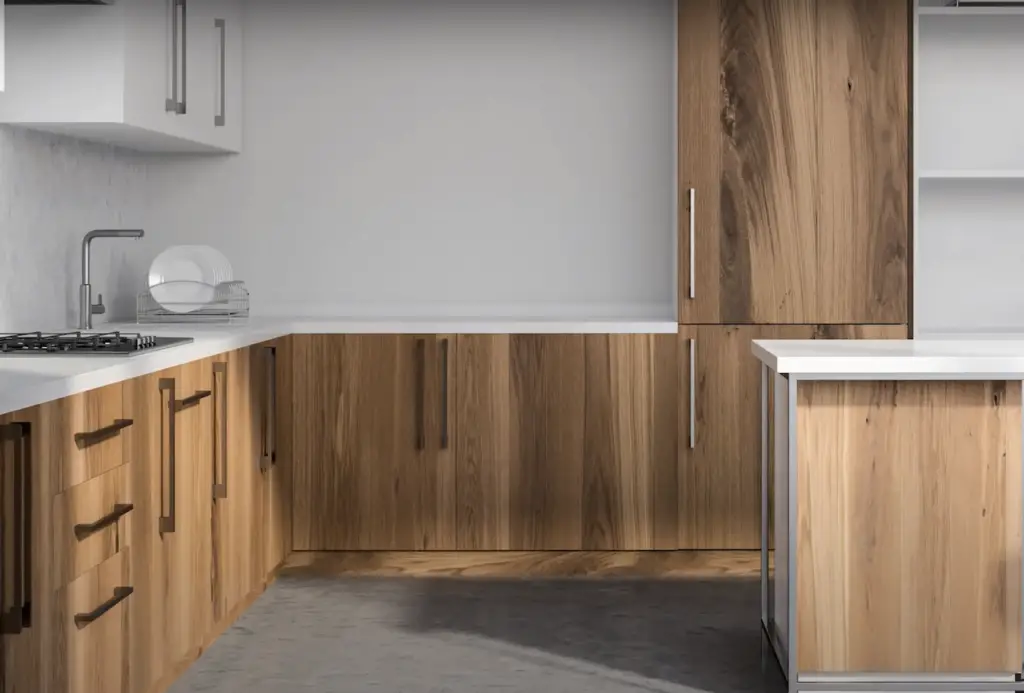
What is the standard depth of kitchen cabinets?
The standard depth for kitchen cabinets is typically 24 inches, but this can vary depending on the type of cabinet you choose and how much storage space you need. Frameless cabinets tend to have a slightly shallower depth of around 21-23 inches, while framed models will usually measure around 25-27 inches. Additionally, keep in mind that some manufacturers offer custom depths for larger appliances like ovens and refrigerators.
What is the most durable type of kitchen cabinet?
If you’re looking for a durable cabinet material, consider wood or stainless steel. Both of these materials are strong and can withstand years of wear and tear. Additionally, they come in a variety of styles and finishes so you can find the perfect match for your kitchen. For added protection, some manufacturers also offer protective coatings that can further enhance the longevity of your cabinets.
What is the best way to organize my kitchen cabinets?
The best way to organize your kitchen cabinets is to start by grouping items together that belong in the same category. For example, putting all baking supplies in one drawer or keeping all dinnerware in one corner of a shelf. Once you have everything grouped, use baskets or dividers to keep items separated and make it easier to find what you need. Additionally, labeling shelves and drawers can also help make the process of finding items quicker and simpler. Finally, if you have space-saving features like pull-out drawers or lazy susans, these can be great for making the most of small areas. Ultimately, the organization is a personal choice and will depend on your needs – so don’t be afraid to get creative!
What do frameless cabinets look like?
Frameless cabinets are typically characterized by a sleek, modern look and lack of any visible frame around the doors or drawers. This style is popular in contemporary kitchens because it offers more storage capacity than framed models while still maintaining an uncluttered aesthetic. Additionally, frameless cabinets can also be easier to install since they don’t require any additional framing work. Ultimately, whether you choose framed or frameless cabinets will depend on your personal preference as well as the size and layout of your kitchen space.
Do I need to seal my kitchen cabinets?
Yes, sealing your kitchen cabinets is important for preserving the finish and preventing moisture damage over time. Sealing products like polyurethane varnish or waterproof sealant can help protect the wood from water, heat, and other elements that can damage the finish of your cabinets. Additionally, it’s important to regularly check for any signs of wear and tear and reseal as necessary. Ultimately, sealing your kitchen cabinets is an easy step to take that can go a long way in helping them last for years to come.
Useful Video: Cabinets: Framed, Frameless & Inset / What’s the Difference?
Conclusion
Framed and frameless cabinets offer homeowners the flexibility to design their kitchens based on personal preference and style. Both cabinet types have advantages and disadvantages, depending on the individual needs of the homeowner. Framed cabinets are typically more affordable than frameless models, but may not provide as much storage space or as sleek a look as frameless cabinets. Frameless cabinets provide a contemporary look with increased storage capacity, but require stronger construction materials and may cost more than framed cabinets. Ultimately, it is up to each homeowner to decide which type of cabinet will best fit their kitchen’s design and budget. The combination of form and function can make any kitchen look beautiful without sacrificing practicality or affordability.
References:
- https://www.homelane.com/blog/kitchen-cabinets/
- https://kitchendesignpartner.com/framed-vs-frameless-cabinets-pros-and-cons/
- https://www.thespruce.com/frameless-kitchen-and-bath-cabinets-1822204
- https://www.durasupreme.com/framed-vs-frameless-cabinetry/
- https://www.finehomebuilding.com/project-guides/kitchens/installing-frameless-cabinets
- https://www.jmwoodworks.com/cabinet-maintenance-how-to-clean-care-for-cabinetry/





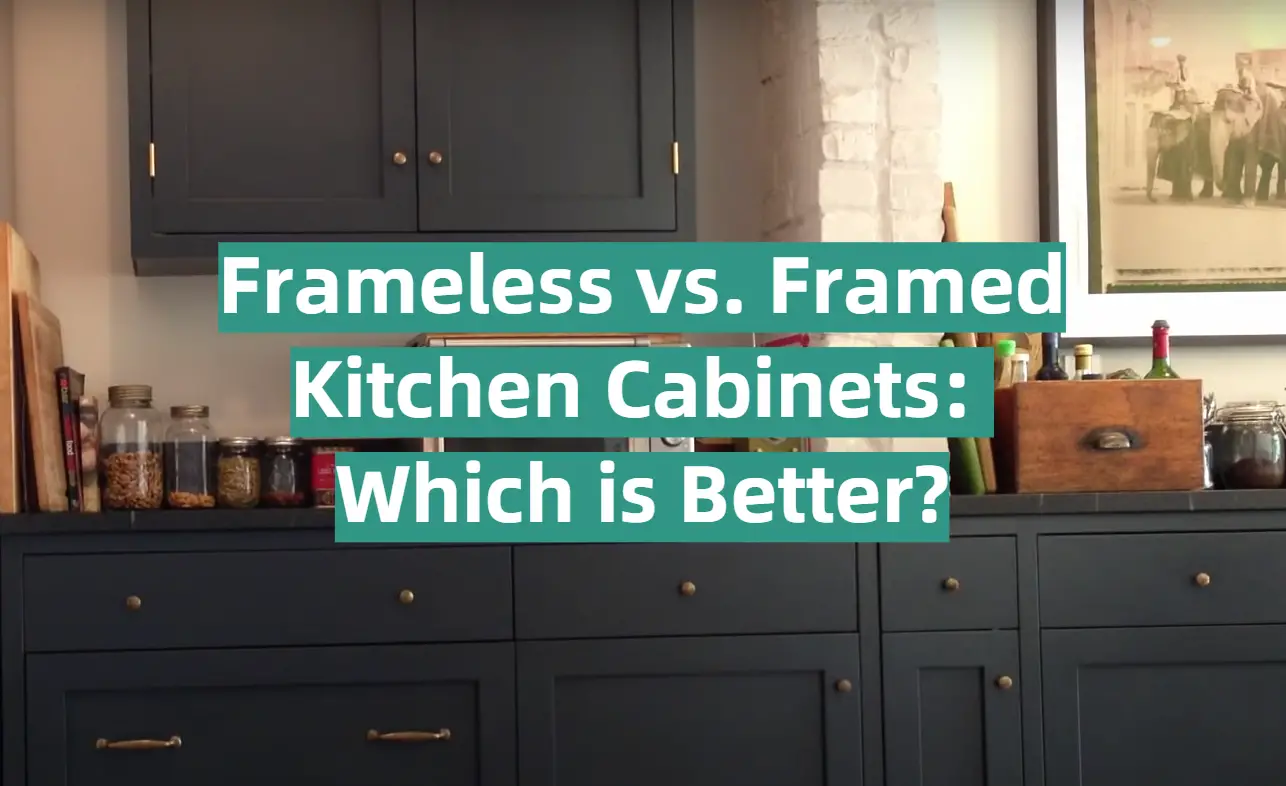







Leave a Reply